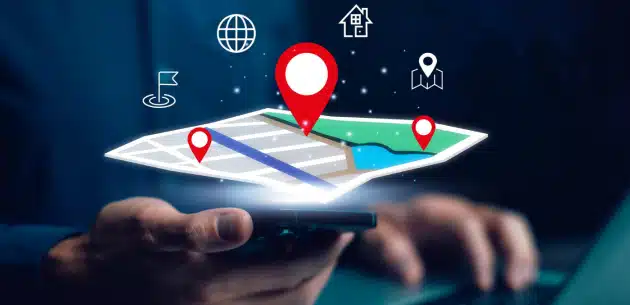A lot has advanced in development in the world of ecommerce since 2016. Whether its leaps in social media to stretching the reaches of omnichannel strategies, some significant progression was made in ecommerce. With such fast pace progression you have to wonder what’s next for 2017. Here are our predictions.
Social Media will continue to thrive
Maybe one of the largest developments in ecommerce this year was the success of social media and its fuel for ecommerce. Facebook’s launch of product tags and the integration of Facebook Dynamic Ads on Instagram are just a few examples. This is just a small aspect of social media influence.
One outlet of social media that can often get overlooked is Snapchat. Snapchat is looking to capitalize off new advertising strategies that will become more widely available in 2017. This year we saw shopping ads created in April in discover, local, and live sections. This created a built in buy from the ad section by the user interacting with the ad by swiping up.
While a lot of these advertising features are not widely available as of yet, the we can still see marketing as a tool of filters correlating with locations and dates. Examples are filters that go along with a movie premiere, or a filter that goes with a store location. Snapchat will most definitely see huge growth in regards to advertising as smaller businesses start to pick up on this.
An additional aspect of social media encouraging ecommerce will be the utilization of Chatbots. Most likely this will be seen in the form of messaging aps. Basically Chatbots are a type of robot agent that helps customers while on their site or app. This happens by creating simulated conversation correlating with a customer’s needs or requests. This will become increasingly popular as customers needs for 24/7 service becomes more relevant. Many individuals would prefer such systems compared to phone call services that can seem bureaucratic and time consuming.
2017 Will also bring a more global marketing strategy. Facebook, Twitter, and Instagram are among the most popularly used social media platforms amongst the Western World. This doesn’t account for potential outreach to other countries to utilize social media platforms that maybe aren’t used, or used as often in the Western World.
WeChat for example is the most popular social media network in China. Because of this western retailers have already started to position themselves knowing this. With a user base of 818 million monthly users, with 200 of those having credit cards attached to their account, it makes sense as to why Western retailers would explore this.
WeChat is far more advanced however than the average messaging application. WeChat allows users to text, video and voice message, make mobile payments, browse stores, play games, and even book taxis.
Currently there isn’t as broad of a reach for everyday commerce as mainly on WeChat Western business pertains to luxury items. Currently those brands include Burberry, Chanel, Coach, and Mulberry. A survey by Bain & Company stated that 60% of Chinese consumers name WeChat and Weibo as their main source of information online for luxury goods. In 2015, Coach ran a very successful campaign across WeChat and Weibo using ‘#MyFirstCoach’. The campaing was about the relationship between mothers and daughters. With this Coach gained 35,000 more followers on WeChat, with 2 million impressions in three weeks.
While WeChat predominately see luxury brand ecommerce, there are some high street brands that are selling well on the app. In 2012, Starbucks launched on the platform, and after a month received on average 22,000 messages a day, and had attracted 62,000 fans. Other brands like Nike, Adidas, and NBA also WeChat. 2017 will definitely bring a full force of new Western retailers to Chinas market.
Omnichannel
The gap between online and physical shopping we will see become smaller and smaller. This can be seen with Google’s Local Inventory Ads, which show online shoppers product availability in stores located near them. With the integration of online presence and physical presence merging like this its safe to assume retailers will be pushing omnichannel approaches connecting online and physical shopping more and more.
Because of the success of online shopping you will also see more store creating more physical locations if they didn’t have one before. This could be in the form of pop-up shops like you see with a lot of high end luxury designers or permanent locations suited for more wide end commercial sales. Having an actual physical location provides more of a personal experience than that of a screen sometimes.
The online brand Missguided is a perfet example of this progression from online success to then physical success. The brand just opened its first physical location in Wesfields Shopping Center in London. The anticipation of the event from consumers was huge and the brand is said to be adding on other personalized aspects to the location like a nail salon and braiding bar soon. This heavy ecommerce interaction and success has allowed the location to experiment with new ideas like integrating online sales to the physical location in the form of online pick up and also returns from online purchases to the store location. Further integrating social media the Missguided store has a location where shoppers can pick up online purchases and take selfies using the hashtag #babesofmissguided.
Nitin Passi, Missguided founder and CEO, said that “As a brand, it is important for us to be present wherever our customer wants to shop us, be it online or offline.”
The ‘click and collect’ method is a fast growing method, particularily in the U.K. 35% of U.K. shoppers buy online and self-collect. The U.S. however has some catching up to do with on 13% of consumers doing that. Many consumers are prone to empty their online shopping cart after viewing the price for delivery. Picking up in-store alleviates that extra cost. It seems evident that this payment method will only grow in 2017, as Planet Retail predicts. This rise is also imminent in other European countries where the rate is still low, if more retailers begin to offer it.
November hold huge sales.
Singles Day, Black Friday, and Cyber Monday are all shopping events held in November and are some of the biggest shopping occasions of the year. With the merge of physical and online shopping, It wouldn’t be entirely shocking to see an outright merge of both of thes events into a potential ‘cyber November’. 2016 saw an estimated online spend of 3 billion dollars setting a new record for online sales in a day. Black Friday also saw a huge increase in physical store shopping. Many companies continued their Black Friday sales into Cyber Monday so it would be no shocker if there to were to ultimately merge into one event.
While Black Friday did see a significant increase in sales it was not as substaintial as Cyber Monday as people seemingly prefer to shop from the comfort of their home rather than get caught up in the sensationalism that is Black Friday shopping crowds. Retailers were fast to pick up on this as this year Amzon’s Black Friday sales lasted for 35 days. What was not a day event as been officially established as something that can last a an entire month.
Ecommerce marketing agency Absolunet made a good point about the Cyber November phenomenon:
“Retailers would benefit from spreading their promotions out over an entire month, making adjustments along the way, instead of betting it all on just one weekend. Logistics would be easier to manage, not to mention that they’d avoid the headaches related to the hordes of shoppers that can grind some stores – online or physical – to a halt during Black Friday weekend.”
With more logically applied practicality going along with spreading out these sales, having a ‘Cyber November’ is a definite possibility, and one that retailers would no doubt benefit from. Another big shopping day that UK retailers would be wise to get involved with is the Chinese shopping festival Singles Day, or Double 11. Commercialized by the Alibaba Group, a large e-commerce company that provides consumer-to-consumer, business-to-consumer and business-to-business sales services via web portals, consumer in 2009, Singles Day has now become the biggest global shopping day. This year, the Alibaba Group raked in $17 billion, with 657 million orders placed, just in 24 hours.
These are just a handful of possible trends that may occur next year – whether they do come to light is another matter, but one thing is for certain. No matter what the specific trends are, judging by everything that’s happened this year, 2017 will undoubtedly reveal a great deal of exciting advancements for the ecommerce industry.






